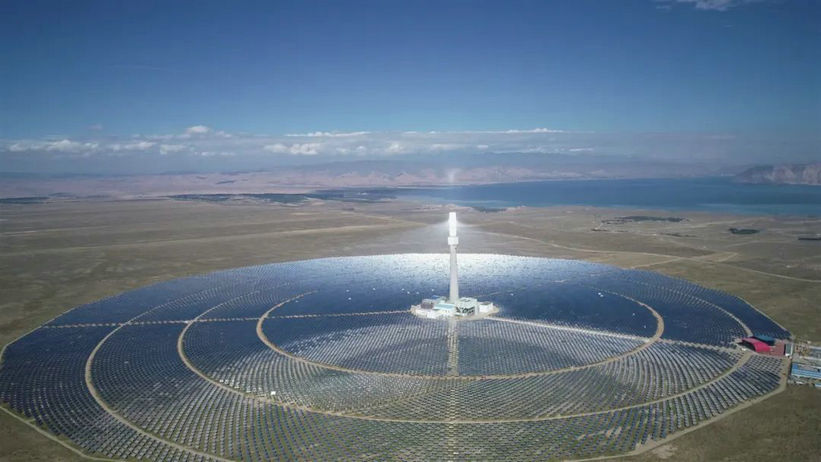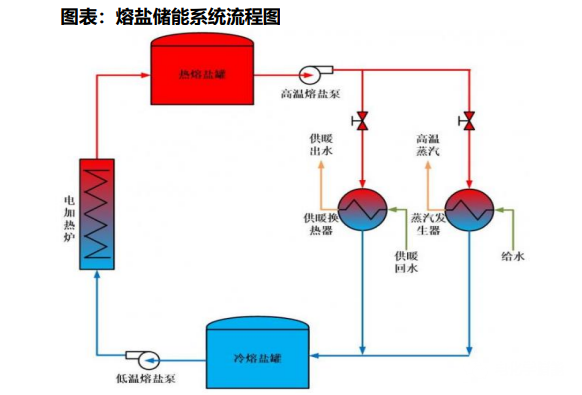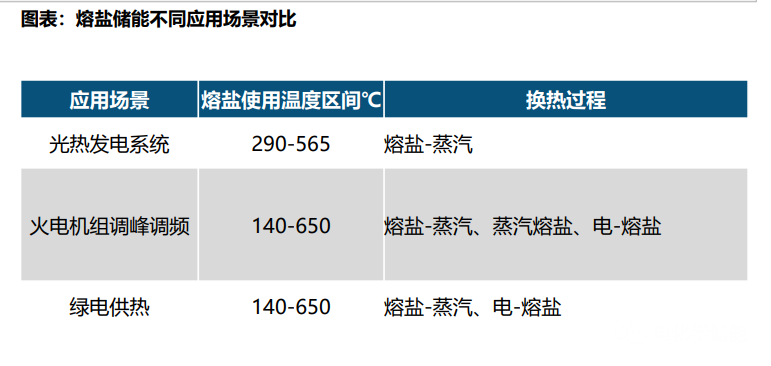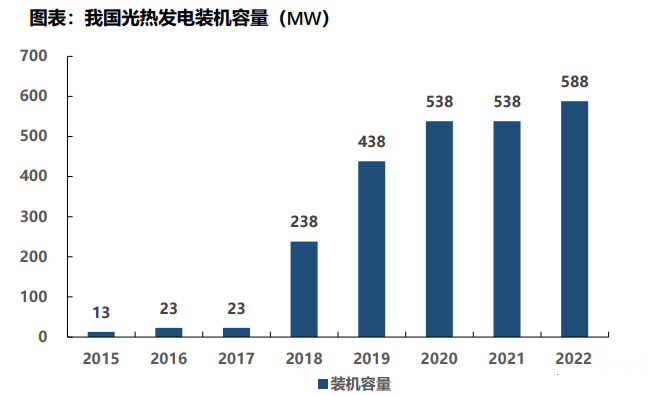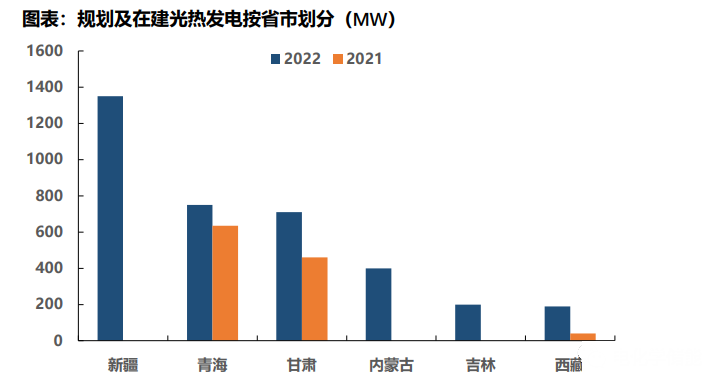| 2023 focuses on long-term energy storage, and the demand for molten salt energy |
| Release time:2023-02-28 10:29:20| Viewed:84 |
Under the background of "double carbon", new energy such as photovoltaic photo-thermal, wind power and hydropower are intermittent and unstable, which is easy to cause the mismatch between energy supply and demand. Molten salt energy storage opens a new mode of long-term energy storage. Currently, it is mainly used in the field of photovoltaic thermal power plants, with the advantages of large scale, high energy storage density and high safety performance. Last year, the official account of electrochemical energy storage published Energy Storage Science | What is Molten Salt Energy Storage Technology? And Focus! The Direction of Disruptive Energy Storage Technology - Long term Energy Storage. Today we will discuss the future development trend of molten salt energy storage.
In 2022, there will be 32 new planned, under construction and photothermal projects in China, and the installed capacity of photothermal power will reach 3610MW, which is more than three times of the new installed capacity in 2021, achieving leapfrog growth. With the construction of photothermal power stations, the demand for molten salt energy storage is expected to increase rapidly.
Molten salt energy storage technology opens a new mode of long-term energy storage. Under the background of "double carbon", building a new power system is a strategic task to ensure China's energy security. There are intermittent and unstable new energy sources such as photovoltaic photothermal, wind power and hydropower, which is easy to cause the mismatch between energy supply and demand. It is necessary to cooperate with energy storage technology.
Molten salt heat storage is a kind of energy storage method with high safety level. It uses molten salt such as nitrate as heat transfer medium, collects solar energy, wind energy and other renewable energy, heats molten salt to high temperature during charging, stores heat energy, and converts heat energy into electric energy during discharging, thus realizing the storage and utilization of clean energy.
Molten salt energy storage is widely used in solar photothermal power generation, coupled thermal power unit peak-shaving frequency modulation, and coupled new energy green electricity heating. According to different application scenarios, the use temperature range and heat exchange process of molten salt are quite different. At this stage, the technical requirements of photothermal power stations are mainly solved.
Molten salt heat storage technology has the advantages of large scale, high energy storage density and high safety performance. At present, molten salt heat storage has the capacity of 10-hour heat storage per day, and the scale of energy storage can reach hundreds of megawatts. The working principle of molten salt energy storage is to heat the molten salt energy storage and drive the steam turbine to generate electricity. The molten salt such as nitrate is used as the heat transfer medium, which has the advantages of long service life, low operating cost and high energy storage density. At the same time, the whole process does not produce pollution emissions.
The key core technology and equipment of molten salt energy storage include molten salt, electric heater, storage tank and heat exchanger. High-temperature resistant molten salt, such as solar salt with mature technology, has a maximum operating temperature of 565 ℃, and is suitable for high parameter photothermal power generation or thermal storage and peak shaving system of thermal power units. Molten salt storage tanks mainly include single-tank, double-tank and multi-tank systems. The single-tank molten salt energy storage system has simple structure and low cost, and is suitable for small area domestic heating and other fields; The double-tank system includes cold tanks and hot tanks. Through the separation of cold and hot molten salt and the circulation of heat exchange in two tanks, the problem of inclined temperature layer is avoided, and the technical risk is relatively low. On the basis of the double-tank system, the number of tanks can be further increased to form a multi-tank system and increase the heat storage capacity.
The key to realize large-scale molten salt energy storage is the research and development of high voltage molten salt electric heater with low cost and feasibility. At present, the molten salt electric heater mainly has three types: resistance type, electrode type and induction type. The existing technology is generally 380V or 690V low-voltage resistance type heater, which is mainly used in the photothermal power generation scenario. The heat exchanger mainly includes shell-and-tube heat exchanger and shell-and-tube heat exchanger. The shell-and-tube heat exchanger is the main form of molten salt heat exchanger at present. The shell-and-tube heat exchanger has the advantages of simple structure and high pressure resistance.
The installed capacity of photothermal power generation in China has reached 588000 kWh, and the molten salt heat storage has developed rapidly. In 2022, China will add a new photothermal power station for grid-connected power generation, which is a demonstration project of Yumen Xinneng secondary reflection tower photothermal power generation, with an installed capacity of 50MW and a design heat storage time of 9 hours. According to the statistics of China's solar thermal power generation system with steam turbine generator units in the scale of more than MW by the National Solar Photothermal Industry Technology Innovation Strategic Alliance, by the end of 2022, China's total installed capacity of solar thermal power generation was 588MW, accounting for 8.3% of the total installed capacity of global solar thermal power generation. At present, the photothermal power plant with the largest single unit capacity in China is the Shouhang Gaoketa photothermal power plant, with a power storage capacity of 1.7GWh.
In 2022, a large number of planned photothermal projects will be launched, and the demand for molten salt energy storage is expected to grow. According to our statistics, in 2022, there are 32 new planned, under construction, and photothermal projects in China, with the installed capacity of 3610MW, more than three times the new installed capacity in 2021, achieving leapfrog growth. Most of the projects will start the bidding process in the middle of 2022. The main reason is that Xinjiang, Gansu, Jiangsu, Qinghai and other provinces have issued policies related to energy storage. According to the "2022 Blue Book of China's Solar Thermal Power Generation Industry" project, the investment of thermal storage system in solar thermal power plants accounts for 11% - 17%. With the construction of solar thermal power plants, the demand for molten salt energy storage is expected to increase rapidly. |



